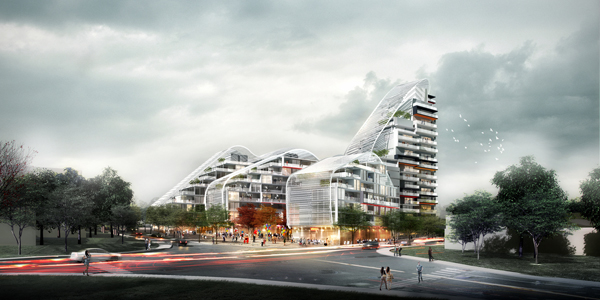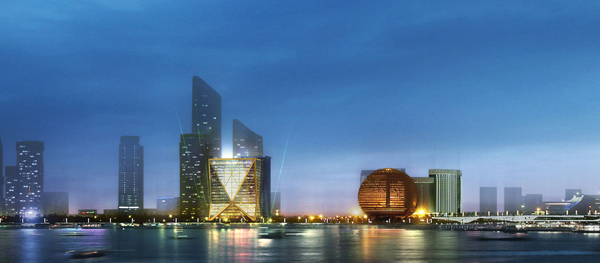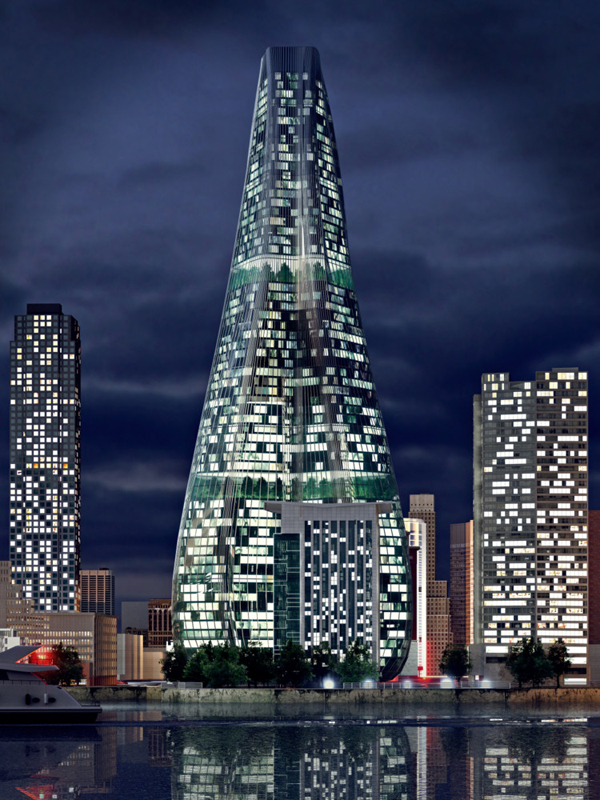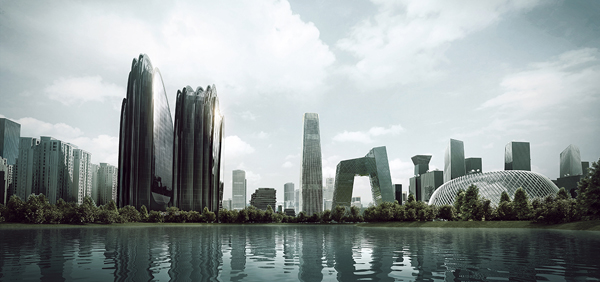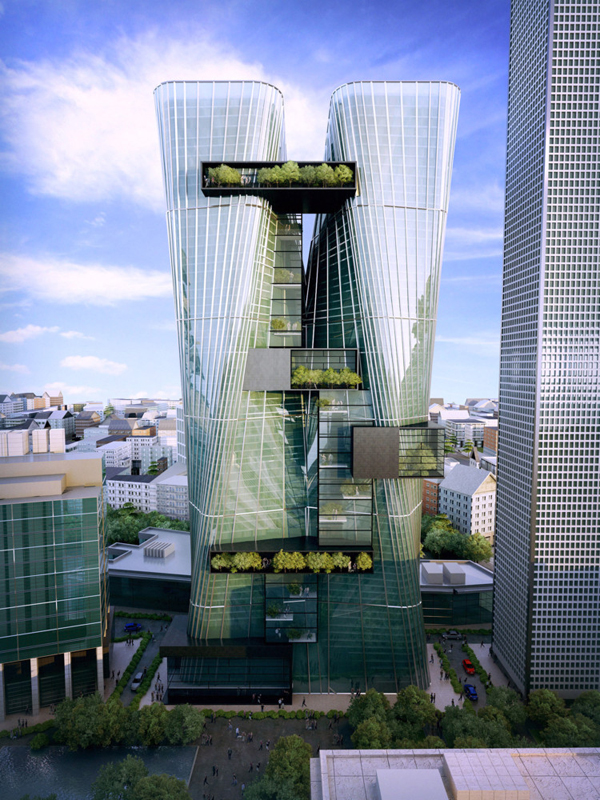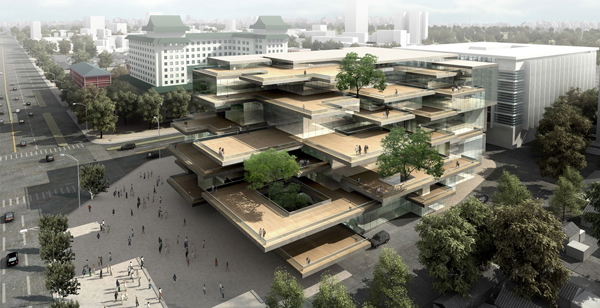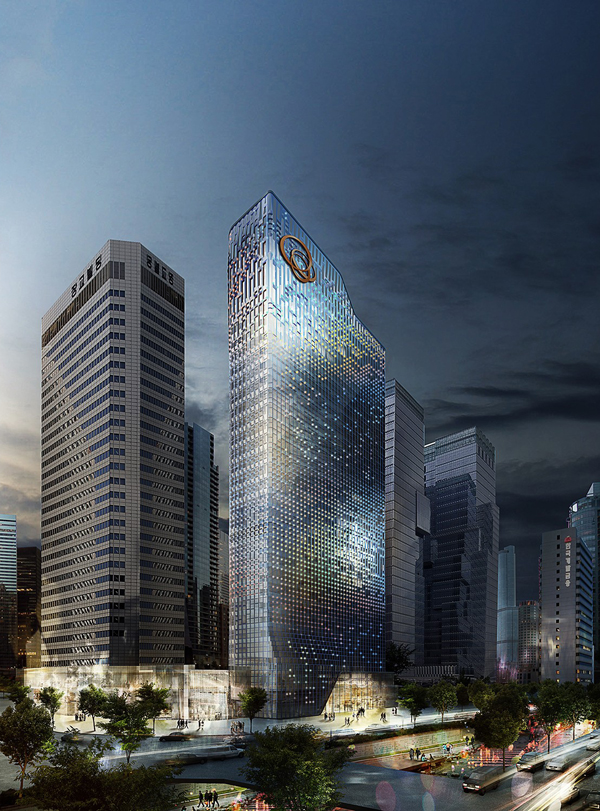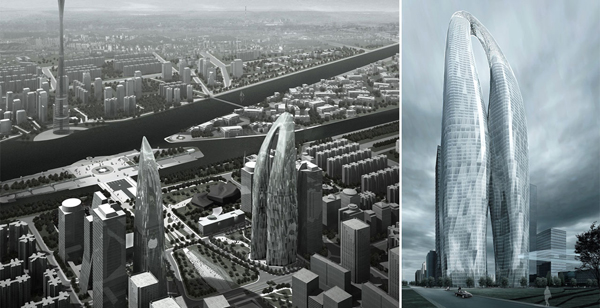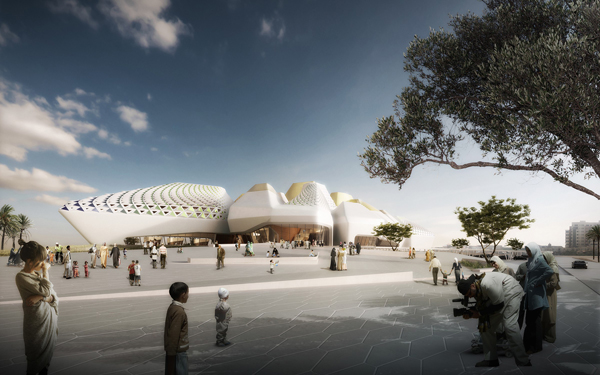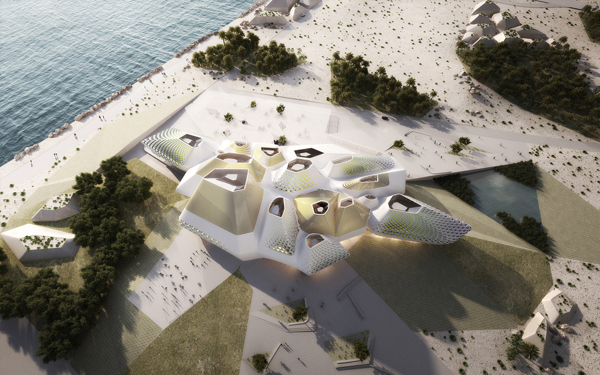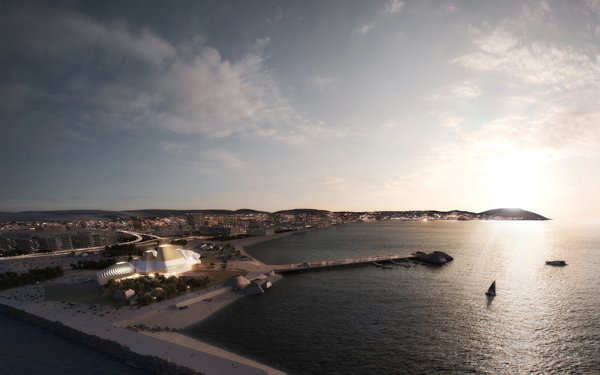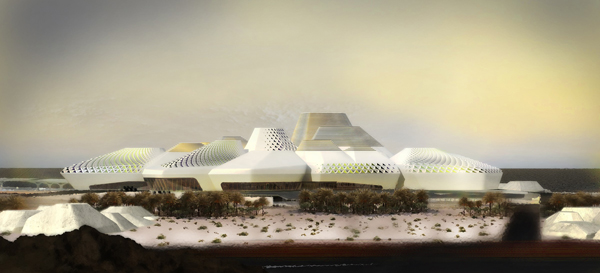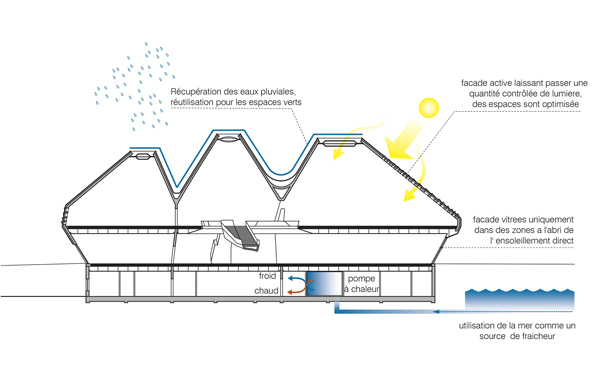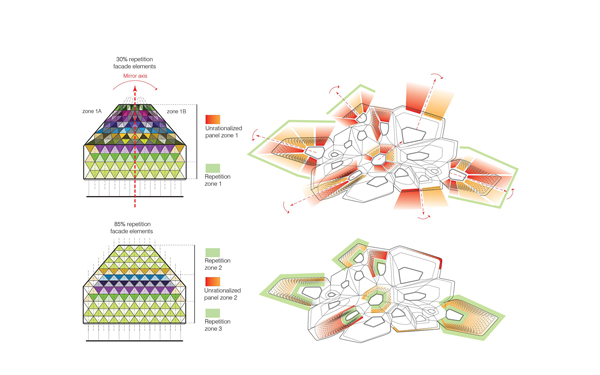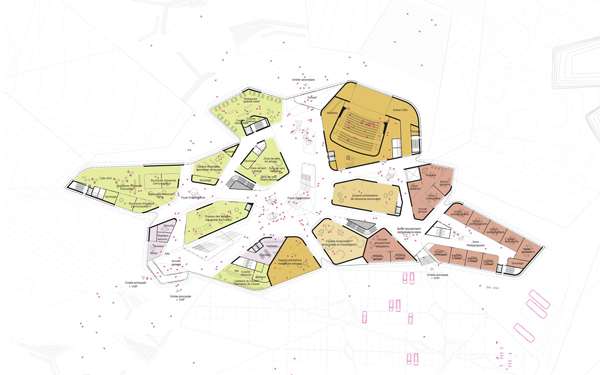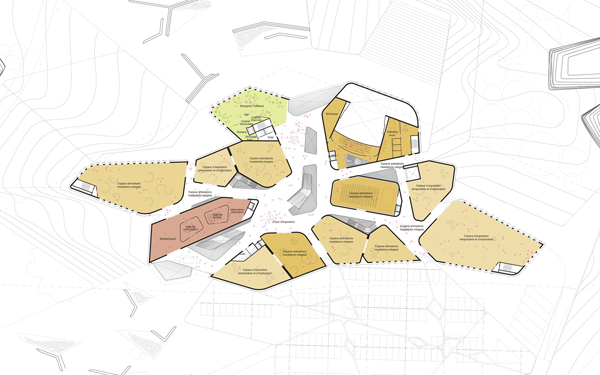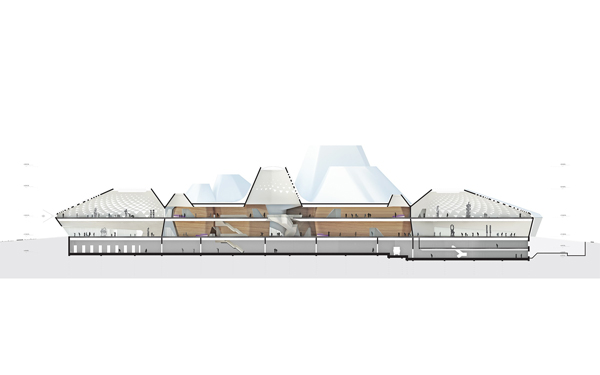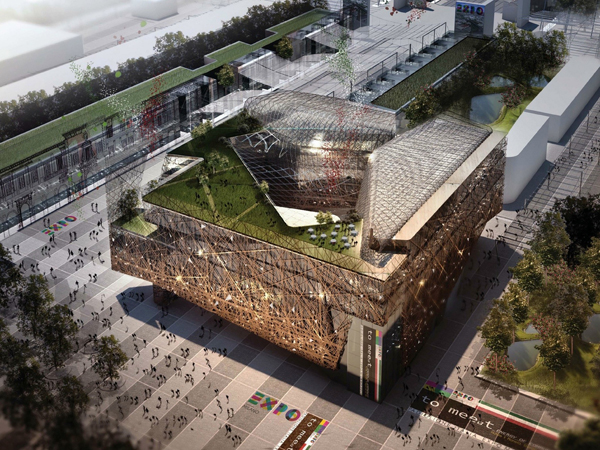The Bass and Flinders Gateway development project, designed by Spark, sits at the very threshold of Wollongong, one of New South Wales’ most beautiful cities. The 35,000 sqm scheme consists of a 300 unit residential development, supported by a modicum of commercial space. The Flinders Gateway development sits on the narrow coastal plain between the Illawarra Escarpment and the Ocean and draws its inspiration from the meeting of these two primeval elements. It is Spark Studio’s first project in Australia and it’s expected to begin construction in 2015.
The apartments are arranged as “coal measures” within linear stacked seams shrouded by a symbolic wave that in part shades the apartments’ terraced gardens. The vivid form of The Bass and Flinders Gateway development offers playful experience of livable and joyful residential neighborhood. Five separate volumes of this mixed-use complex are connected underground with two-level garage space. The public plaza, formed between the high-rise volumes, is cascaded, enabling sheltered common places for gathering and socializing.
SPARK Studio is an award-winning international design practice that aim at creating distinctive buildings for clients and great places for people. They focus on architecture’s potential to contribute positively to the experience of the city while addressing the pragmatic issues that govern each project. Spark works with the bold yet common sense vision of enlarging the spaces of the city into their buildings, and of unfolding our buildings into the city – creating opportunities for layered experiences and engaging places. Read the rest of this entry »

